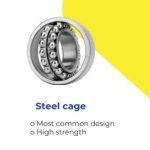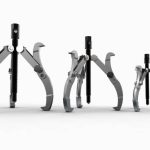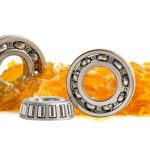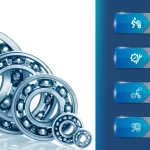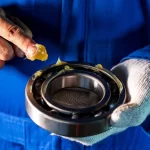Thin section bearings, also known as slim bearings or slimline bearings, are precision-engineered bearings with extremely thin cross-sections. Imagine holding a standard ball bearing between your thumb and forefinger. Now, picture a thin section bearing of the same diameter and width as the standard bearing. The thin section bearing will appear significantly thinner and more delicate compared to the standard bearing.
To provide a real-to-scale perspective, let’s consider specific dimensions. Suppose the outer diameter of a standard ball bearing is 50 mm, and its width (or thickness) is 10 mm. In contrast, a thin section bearing with the same outer diameter of 50 mm may have a width of only 5 mm or even less. This reduction in width gives the thin section bearing its characteristic slim profile.
These bearings are designed to operate in space-constrained applications where conventional bearings cannot fit, offering significant advantages in weight reduction, space savings, and overall system performance.
Visually, the thin section bearing will look sleeker and more streamlined compared to the standard bearing. Its thin cross-section allows for space-saving designs and lightweight applications, making it ideal for environments where minimizing weight and size are critical, such as aerospace, robotics, and medical equipment.
Structure, Design and Features of Thin Section Bearings
Let’s take a walk through the structure and design features of thin section bearings:
- Thin Cross-Section: As the name suggests, thin section bearings are characterized by their slim profile. Unlike conventional bearings, which have thicker rings and larger balls or rollers, thin section bearings have a significantly reduced cross-section, particularly in relation to their bore diameter and outer diameter.
- Ring Geometry: Thin section bearings typically feature precision-machined rings with extremely thin cross-sections. These rings are often made of high-quality, corrosion-resistant steel or other materials suitable for bearing applications. The thin design of the rings allows for reduced weight and space-saving configurations.
- Ball or Roller Elements: Thin section bearings may utilize either balls or rollers as rolling elements. These elements are housed within the thin rings and are responsible for carrying the load between the bearing races. Despite their reduced size, the balls or rollers are engineered to provide efficient load-bearing capabilities.
- Cage or Separator: In some designs, thin section bearings incorporate a cage or separator to maintain proper spacing and alignment of the rolling elements. This component helps to prevent friction and wear between the balls or rollers, ensuring smooth operation and extending the bearing’s service life.
- Seals or Shields: Depending on the application requirements, thin section bearings may feature seals or shields to protect against contamination and retain lubrication. These protective elements help to maintain the integrity of the bearing assembly, particularly in harsh operating environments.
- Mounting Configurations: Thin section bearings are available in various mounting configurations to accommodate different application needs. They may be offered as open bearings for easy installation and maintenance, or they may come with integrated seals or shields for added protection.
- Precision Engineering: Due to their slim profile and precise machining requirements, thin section bearings are typically manufactured to high levels of accuracy and precision. This ensures consistent performance and reliability, particularly in applications where tight tolerances are essential.
Overall, the structure and design features of thin section bearings are optimized for space-saving, lightweight applications where minimizing weight and maximizing performance are critical factors.
Working Principles and Functionality of Thin Section Bearings
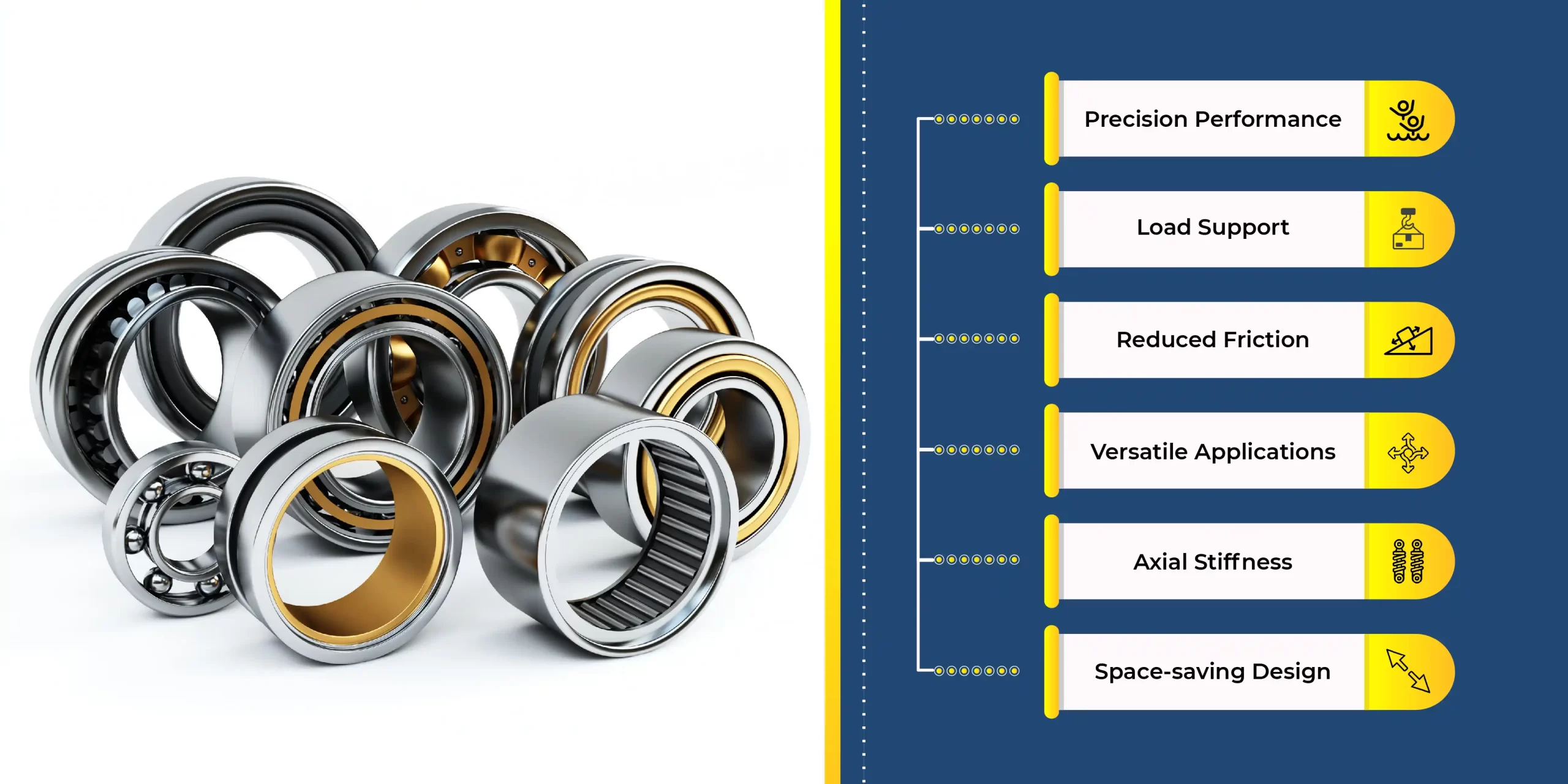
Let’s delve into the working principles and functionality of thin section bearings:
- Load Support: Thin section bearings are designed to support both radial and axial loads, albeit in a limited space. Despite their slim profile, these bearings are engineered to efficiently distribute the applied loads across their raceways and rolling elements. This load-bearing capability allows thin section bearings to withstand the forces encountered in various applications.
- Reduced Friction: Thin section bearings are optimized for low friction operation, thanks to their precision engineering and efficient design. The minimal contact area between the rolling elements and raceways reduces frictional resistance, resulting in smoother rotation and enhanced energy efficiency. This reduced friction contributes to improved performance and longevity of the bearing assembly.
- Axial Stiffness: In addition to load support, thin section bearings exhibit high axial stiffness, which refers to their ability to resist deformation under axial loads. This stiffness is essential for maintaining the integrity and alignment of the bearing assembly, especially in applications where precise positioning and accuracy are critical.
- Space-saving Design: One of the key advantages of thin section bearings is their space-saving design. By minimizing the cross-sectional dimensions of the bearing assembly, these bearings enable compact and lightweight machine designs without compromising performance. This feature is particularly advantageous in applications where space constraints are a concern, such as robotics, aerospace, and medical equipment.
- Precision Performance: Thin section bearings are known for their precision performance, owing to their high-quality materials and meticulous manufacturing processes. With tight tolerances and minimal runout, these bearings deliver consistent and reliable operation, even in demanding environments. This precision is essential for maintaining accuracy and repeatability in critical applications.
- Versatile Applications: Due to their unique combination of features, thin section bearings find applications in a wide range of industries and equipment, including robotics, automation, aerospace, medical devices, semiconductor manufacturing, and more. Whether it’s providing smooth motion control in robotic arms or supporting delicate instruments in medical devices, thin section bearings play a crucial role in various technological advancements.
Overall, the working principles and functionality of thin section bearings revolve around their ability to efficiently support loads, minimize friction, maintain stiffness, and enable compact designs. These bearings offer a versatile solution for applications where space, precision, and performance are paramount.
Applications of Thin Section Bearings:
| Industry | Applications | Benefits |
| Robotics and Automation | Robotic joints, articulated arms | Enables compact and lightweight robot designs, facilitates precise and smooth motion control. |
| Aerospace and Aviation | Aircraft landing gear, control systems | Reduces weight and space requirements, ensures reliable performance in demanding aerospace environments. |
| Medical Equipment | MRI machines, surgical robots | Allows for compact and lightweight medical devices, provides smooth and precise movement for surgical procedures. |
| Semiconductor Manufacturing | Wafer handling systems, robotics | Ensures precise positioning and alignment in semiconductor manufacturing processes, enhances productivity and yield. |
Advantages and Benefits of Thin Section Bearings
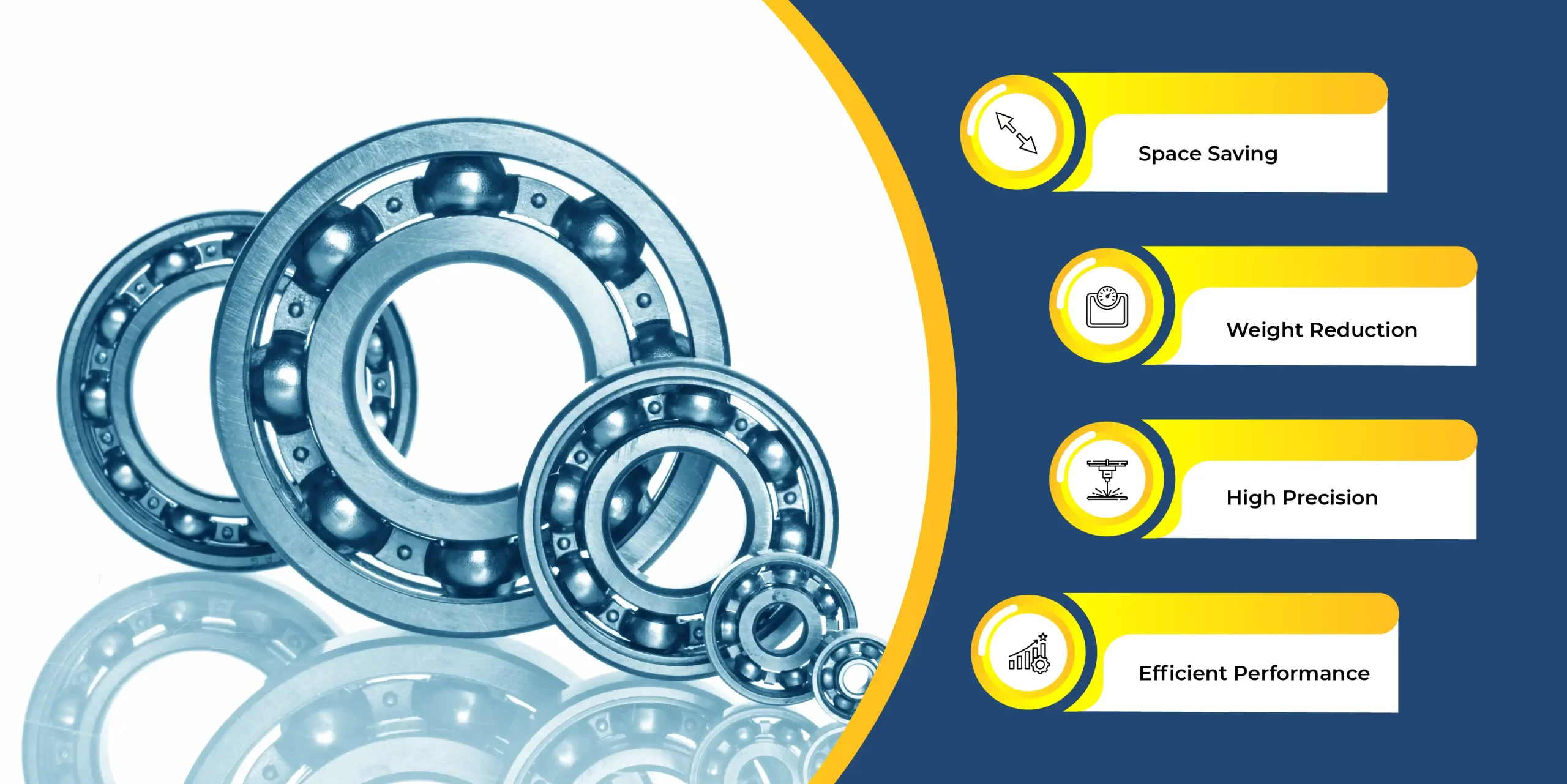
- Space Saving: Thin section bearings enable compact designs and reduce overall system size.
- Weight Reduction: Their lightweight construction contributes to lower system weight and improved efficiency.
- High Precision: These bearings offer exceptional precision and stiffness, making them ideal for demanding applications.
Efficient Performance: They minimize friction and heat generation, resulting in improved operational efficiency and extended service life.
Installation and Maintenance Guidelines
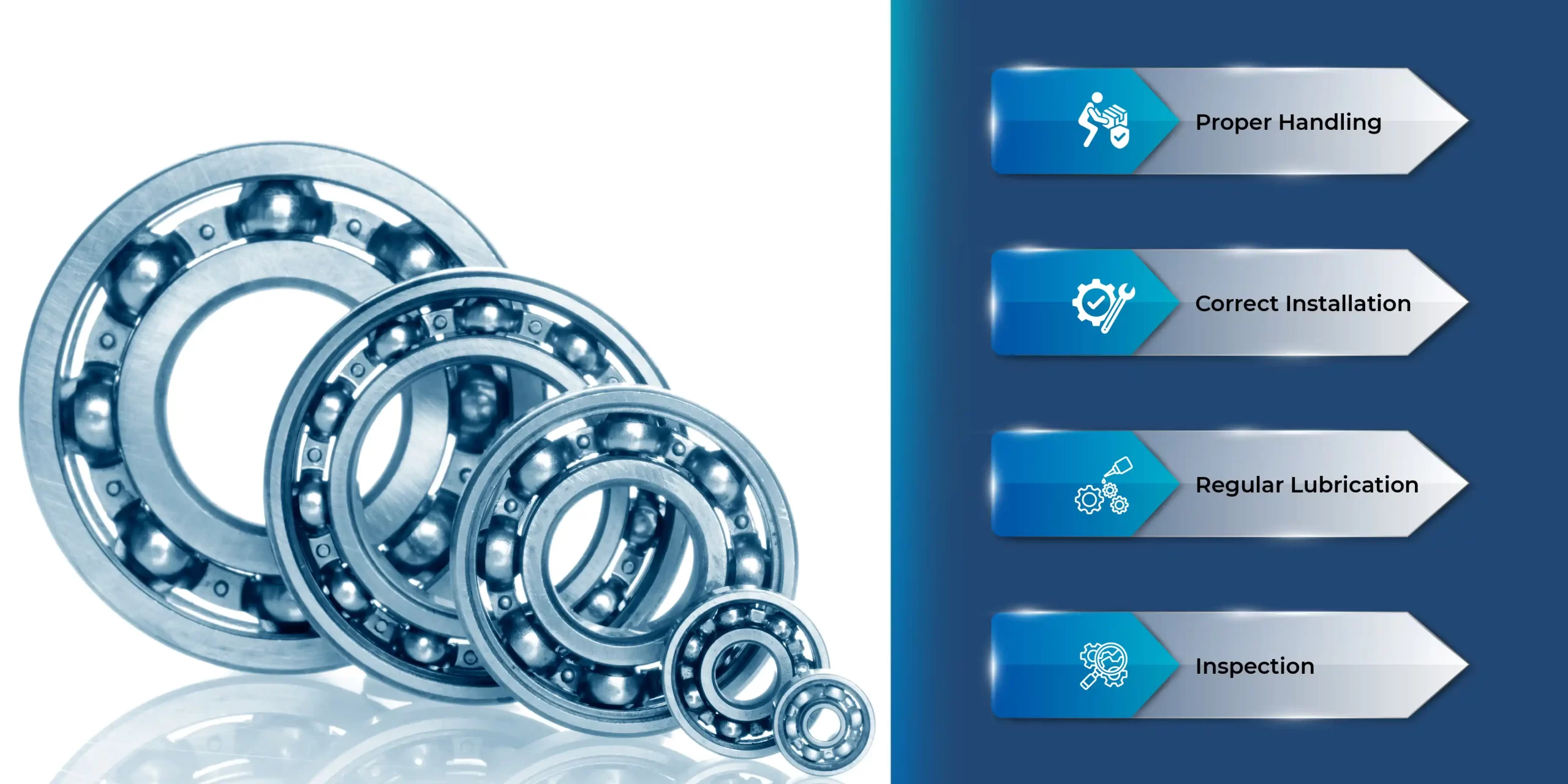
- Proper Handling: Handle thin section bearings with care to prevent damage to the delicate components.
- Correct Installation: Ensure proper alignment and seating of the bearing to prevent misalignment and premature wear.
- Regular Lubrication: Follow manufacturer recommendations for lubrication intervals and use the appropriate lubricant for optimal performance.
- Inspection: Periodically inspect the bearings for signs of wear, damage, or contamination, and replace them as needed to prevent system failures.
In conclusion, thin section bearings offer significant advantages in weight reduction, space savings, and performance enhancement across various industries. Their unique design and precision engineering make them indispensable for applications where conventional bearings cannot meet the stringent requirements. By choosing the right thin section bearings and following proper installation and maintenance practices, engineers can optimize system performance and reliability in space-constrained environments.
FAQ's
Which is the thinnest bearing?
The thinnest bearings are typically categorized as thin section bearings, which are engineered to have extremely thin cross-sections while maintaining high load capacities.
Which is the most efficient bearing?
The most efficient bearing depends on the specific application requirements, but thin section bearings are often preferred for their lightweight construction, reduced friction, and high precision.
How do I know which bearing to use?
The selection of bearings depends on various factors such as load capacity, speed, operating conditions, and space limitations. Consult with bearing manufacturers or engineers to determine the most suitable bearing for your application.
How do I choose bearing size?
Bearing size selection involves considering factors such as load requirements, shaft diameter, housing dimensions, and clearance specifications. Refer to bearing catalogs or consult with engineering experts to choose the appropriate size for your application.




